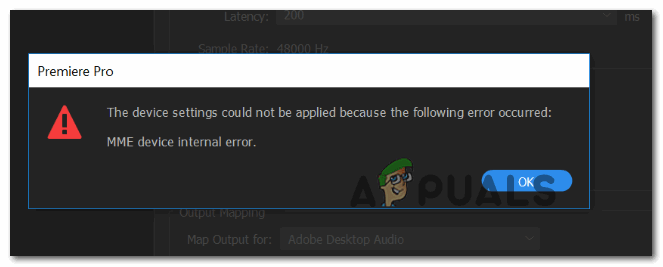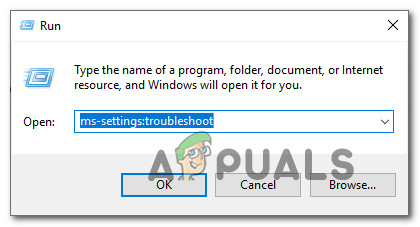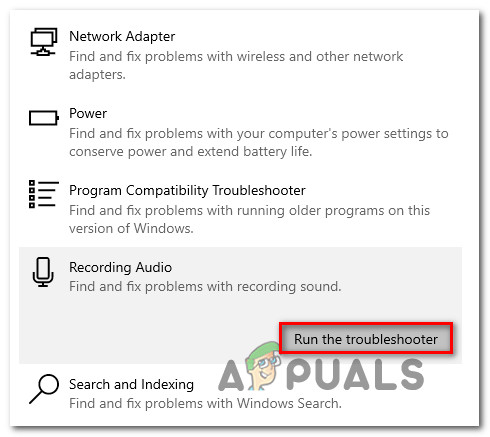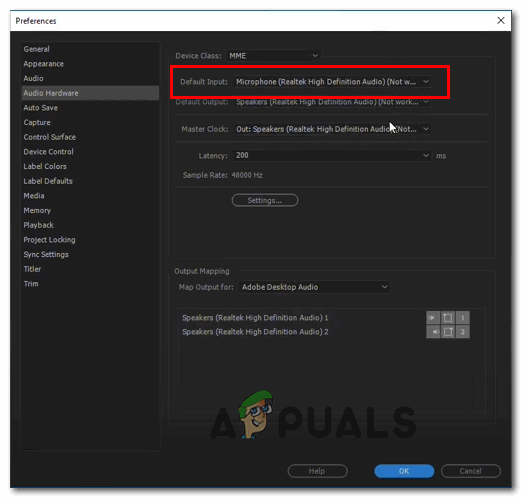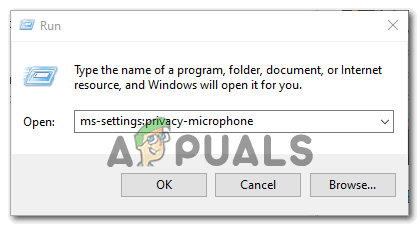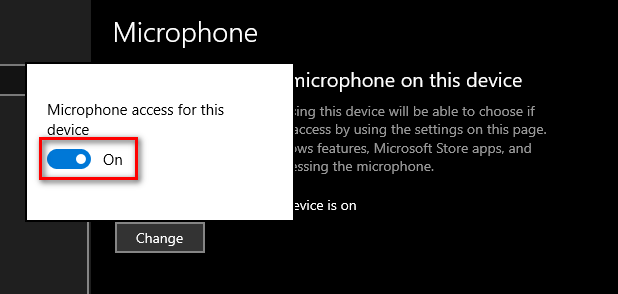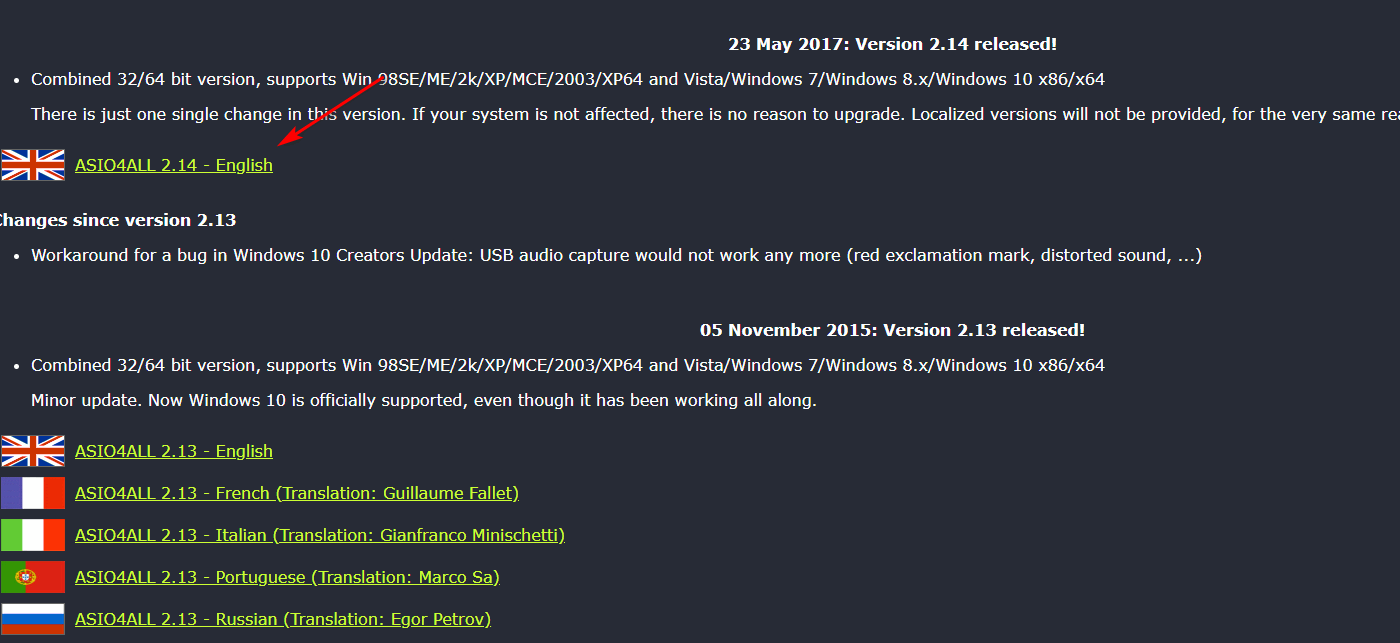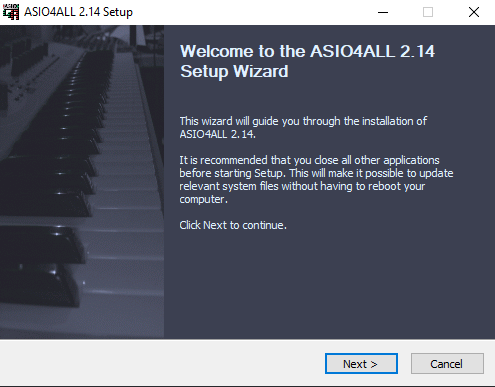When troubleshooting for this particular issue, you should start by seeing if your operating system is not capable of fixing the problem automatically. Do this by running the Recording Audio Troubleshooter and applying the recommended fix. If this doesn’t work and you don’t really require microphone input when editing your videos in Adobe Premiere PRO or Adobe Premiere Rush, you can fix the problem swiftly by accessing the Audio Hardware settings and changing the Default Input to None. But doing this will restrict Adobe from tuning in to the audio your connected microphone picks up. Another possibility that might end up causing the ‘MME Internal Device‘ error is a restriction imposed by Windows 10. It’s possible that microphone access is turned off for the device where you’re using Adobe Premiere on. In this case, you should be able to fix the issue by navigating to the Privacy tab of the Settings app and allowing Microphone access for this device. However, if you’re encountering the problem on Windows 10, you can also expect to see this problem due to an Audio Capture bug that was introduced along with the Creator’s update and affects UB audio capture on various video editing apps. In this case, you can either install the hotfix released by Microsoft via Windows Update or you can install the 3rd party WDM Audio driver ASIO4ALL. If everything else fails, you need to seriously consider that you are actually facing some kind of system file corruption that is effecting the recording infrastructure of your OS. In this case, you can either perform a clean install or a repair install in order to refresh every relevant OS component that might be responsible for this problem.
Method 1: Running the Recording Audio Troubleshooter (Windows 10 Only)
In the event that you’re experiencing microphone issues with other applications than Adobe Premiere Pro, it’s very likely that you’re dealing with a generic inconsistency that your Windows 10 OS might be capable of resolving automatically. You can expect to see the ‘MME Internal Device‘ error due to an incorrect recording configuration – In this case, running the Recording Audio troubleshooter might fix the issue for you (if the problem you’re encountering is already covered by a repair strategy). This utility was build to scan your computer for common audio recording problems and automatically applied verified fixes if a compatible scenario is found. Several users that were previously dealing with the ‘MME Internal Device‘ error have confirmed that this method worked for them. If you’re encountering this issue on Windows 10, follow the instructions below to run the Recording Audio troubleshooter and apply the recommended fix: In the event that the same problem is persisting, move down to the next potential fix below.
Method 2: Set Default Input to None
If you don’t really care about microphone input, then there’s a really simple fix that will allow you to work around the ‘MME Internal Device‘ error – You can simply go into your Adobe Premiere settings and change Input from Audio Hardware to None. This small but important modification will ensure that Premiere is no longer listening from microphone sounds, so the error message will stop appearing even in situations where Windows is preventing the Premiere app (and other 3rd party apps) from using the built-in microphone. This is more of a workaround rather than a fix, but a lot of affected users have confirmed that this operation was successful in allowing Premiere Pro and Premiere Rush users to top encountering the ‘MME Internal Device‘ error. If you want to give this workaround a try, follow the instructions below: In case you really need Microphone input and you can’t really afford to disable it from the Audio Hardware menu, move down to the next potential fix below.
Method 3: Allowing Microphone access (Windows 10 Only)
If you’re encountering this problem on Windows 10, and a trip to Preferences > Audio Hardware (in Adobe Premiere) is pointing out that your audio devices aren’t working properly, you’re likely seeing the ‘MME Internal Device‘ error because the microphone access for this device is turned Off. Several affected users that encountered a similar issue have confirmed that they managed to fix the issue by accessing the privacy settings on Windows 10 and modifying the default behavior for the active microphone so that it’s able to access the device it’s on. If the scenario described looks like it could be applicable to your current situation, follow the instructions below to allow Microphone access and resolve the ‘MME Internal Device‘ Error on Windows 10: In case you still end up seeing the ‘MME Internal Device‘ error, move down to the next potential fix below.
Method 4: Resolving the Audio Capture bug on Windows 10
If you’re encountering the issue on Windows 10 that’s not updated to the latest build and none of the potential fixes above have worked for you, it’s very likely that you’re dealing with a bug with the Creators Update on Windows 10. This is a well-known problem that affects USB audio capture with various video editing apps including Adobe Premiere Pro and Adobe Premiere Rush. If this scenario is applicable, you have two ways forward: Option A – Installing every pending update along with the fix that resolves this inconsistency (Microsoft has already patched this problem via a hotfix that gets installed via Windows Update) Option B – Installing the ASIO4ALL Universal ASIO Driver for WDM Audio in order to circumvent the generic Audi driver bug. Regardless of your preferred way of fixing the problem, we have created two separate guides that will walk you through both Option A and Option B. If you want to fix the ‘MME Internal Device‘ error by installing every pending Windows Update, follow Option A (Recommended. On the other hand, if you have no desire to update and install the Microsoft provided hotfix, follow Option B.
Option A: Installing the hotfix via Windows Update
Option B: Installing ASIO4All WDM Audio Driver
In case the same problem is still persisting, move down to the final fix below.
Method 5: Performing an in-place repair
In the event that none of the potential fixes above have allowed you to fix the issue, it’s very likely that the ‘MME Internal Device‘ error is somehow being facilitated by some type of system file corruption that’s affecting your OS files. If this scenario is applicable, the only way to fix the issue is to perform a procedure that ends up refreshing every Windows component and ensures that there’s no corrupted data that might end up causing this problem. Of course, the most popular option is a clean install, but this is not the most efficient solution. Sure, it will refresh every OS component, but unless you backup your data in advance, you can expect total data loss on your OS drive. This includes personal media, installed applications, games, and user preferences. If you want the most efficient approach, go for a repair install (in-place reinstall) – While this operation will require you to insert a compatible installation media, the main advantage is that the procedure will only reinstall system files (Windows components), without touching your applications, games and user preferences.
Gravity Rush Movie in The Works by PlayStation and Scott Free ProductionsIntel To Rush Production Of 11th-Gen Rocket Lake CPUs To Beat ZEN 3 Cezanne AMD…How to Fix ‘Error Compiling Movie’ in Premiere ProFix: Adobe Premiere Pro Could Not Find Any Capable Video Play Modules
